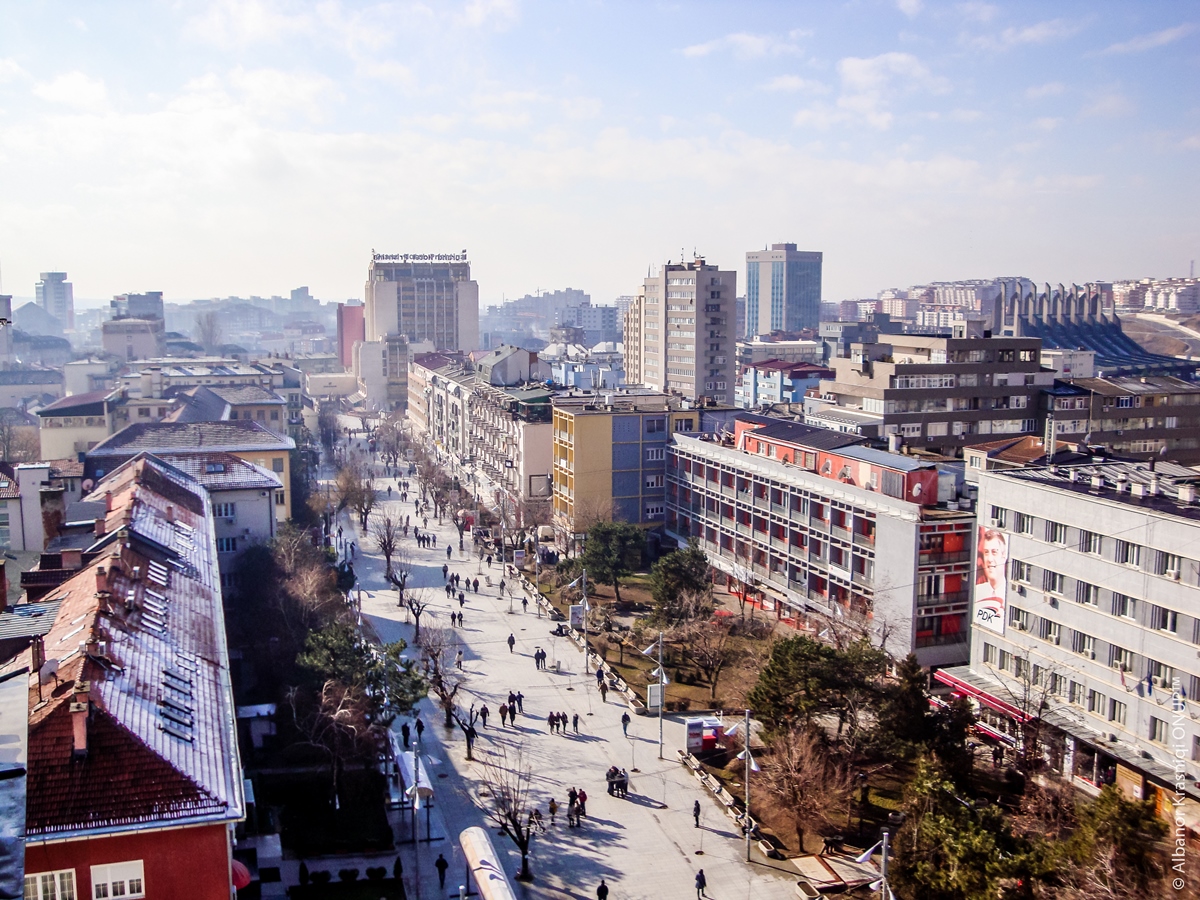
Prishtina Used To Have Two Rivers
by Attila Beksac
Prishtina seems too hasty these days. The city, which is the youngest capital of both Balkans and Europe has lots of problems to solve while ‘turbo-urbanism’ has taken effect in whole its distritcs .
It can be said, this experience that Prishtina has been tasting since the end of Kosovo War is familiar and has taken its roots from the ex-memories of territory’s rich historical cities. ‘Identity crisis’ seems obviously the most suitable topic to call this developments.
The city, that had been a homeland for a lot of nations and empires by centuries , seems so willing to change it’s characteristic with the new one. And the new Prishtina seems can easily give its cultural memory and architectural heritage to greedy hands of international capital’s investors.
By being the capital of Socialist Jugoslavian period’s Kosovo Autonomus Region , city became a paradise of mass brutalist flats and other structures in country. These structures share similar type of simple facades which represents period’s ideologic point of view about urbanism. However, there are some monuments from socialist era that could be named ‘uniqe’ as Croatian architect Andrija Mutnjakovic’s ‘National Library of Prishtina’, ‘Palace of Youth’ (alb. Pallati i Rinise- ex name. Boro-Ramiz), monument of Brotherhood and Unity .
On the other hand, current and upcoming experiences created a chaos ,while Prishtina which rised from the ashes of Roman ancient city Ulpiana having journey between its layers. Since war finished and Kosovo started to be recognized as independent internationally , huge migration waves affected the demographic structure of the city. As a result of migration waves, city has suffered by several issues like lack of housing capacity , unsufficient infrastructure and some ex-Serbian properties. While governors were trying to deal with more vital problems in economy and politics, some opportunist investors abused the authority deficit by building multi-floored, high mass-housing sembolized the new era’s capital approach.
By illegal built movement city has become work site of unplanned urbanization.
Kai Vöckler’s ‘Prishtina is Everywhere, Turbo Urbanism: the Aftermath Crisis’ book indicates clearly tragic transformation city has suffered. Author used ‘turbo urbanism’ term to describe effetcs of unplanned and illegal approaches that damages city’s urban character. He mentioned in particular one unit of the book and compared this transformation with post-Soviet states, Indian suburbs and Brazilian favelas. This book also includes graphics and maps which indicates the situation of Prishtina after 1999 and offers possible solutions, strategies and approaches to protect city’s urban structure from bigger likely issues.
Unfortunately turbo-urbanism’s speed has gone so far from the hands of law’s reality. Five stars hotels, mass housings, luxury sites are rising with highly contribution of rich international investors while no debate organized by governors of municipality , whether they are suitable for city pattern – skyline or not. In addition of this, urban planners prepared renovation plans for important city lands as Mother Teresa Street , Zahir Pajaziti Square and pedestrian areas linked city center. ‘Turbo-urbanism’ is shaping the motto of western, capital, shiny and modern ‘ Prishtina of the Future ’.
Dardan, Roman, Ottoman and Socialist Jugoslavian identities are throwing out of focus and modern glassed steel structures are replacing the old simple facades. Prishtina is owning new stops in this inter-layers journey. Prishtina’s International community’s contribution to this evolution process is undeniable. With the aim of creating alternative destinations some tourism agencies like In Your Pocket published Prishtina guide for Western travelers.
All society mechanisms are trying to represent their authority by building new monumental structures. The yellow ‘Newborn’ monument which was shown in Kosovo origined British international singer Rita Ora’s ‘Shine Ya Light’ video is one of these examples. Newborn Monument is a new member that sembolizes post-modern independent Kosovo’s national memory and passion of freedom. After a while, monument was painted with all state’s flag that recognized Kosovo’s indipendence.
Capital investors are not the only part of society’s movement who wants to show whose authority by new monuments. With major Islam community, religious monuments are also rising in the center of Prishtina and adding new skylines to the city as in new Mother Teresa Cathedral and upcoming Prishtina Central Mosque project.
I describe this journey between city layers with the term ‘peeling the onion’ used by German autor Günter Grass. If we consider every layer of the onion as Prishtina’s experienced ones , it will obviously seen how terrible resolution is going on.
These two structures that shown in pictures on top are some that could protect itself till today. Prishtina is an open-air architectural experience. It’s the museum of chrolonogicly good, bad, correct, false approaches . City is developing in a chaotic way and out of control.
As a plausible problem-solving offer; historical buildings and historical city center in particular, should be re-planned in order to characterized by Italian ‘centro storico’ mentality which seperates old city from new one.
One day if you’ll visit Prishtina , you’ll see some grafitti’s on lands which says ‘Prishtina used to have two rivers’. This motto currently represents the rightminded citizens sensibility. And takes it’s roots from old rivers that passed through the city center before. The reason for covering the rivers was because they passed by the local market and everyone dumped their waste there. This caused an awful smell and rivrs had to be covered. And today, while these rivers passing under the city, citizens are living in the city of concretes.


